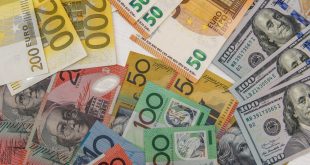The US dollar has been softer despite the recent slew of US data, including Retail Sales and Jobless claims.
The US Dollar Index dropped further on Thursday, extending the negative momentum that followed the FOMC statement. The dovish signals from the Fed have weighed on the US Dollar, which remains vulnerable as Treasury yields hover around multi-month lows.
Gold is holding onto most of its recent gains but struggling to stay above the relevant technical level of $2,040. The rebound in gold prices is losing momentum.
Economic Data
US economic data released on Thursday surpassed expectations but provided only modest support for the US Dollar. Retail sales rose 0.3% in November, compared to a 0.1% decline of market consensus. Initial and continuing jobless claims also came in better than expected. On Friday, the S&P Global Composite PMI, the Empire Manufacturing Index, and Industrial Production data are scheduled for release.
Economic Data Ahead:
After central banks’ announcements, the market focus shifts back to economic data. Global Purchasing Managers’ Index (PMI) releases are scheduled, with the preliminary December readings to come out earlier due to the holiday season.
Chinese economic data includes the House Price Index, Industrial Production, and Retail Sales. In the US, in addition to the S&P PMI, the Empire Manufacturing and Industrial Production are also due.
Improvements in the annual rates are anticipated, and if they align with expectations, they could contribute to improved risk appetite.
Key Developments
The EUR/USD accelerated to the upside, reaching levels above 1.1000. The pair tested November and December highs around 1.1010. As expected, the European Central Bank (ECB) left interest rates unchanged.
Euro bulls cheered the unchanged guidance from the ECB. However, market expectations continue to forecast a dovish stance from the ECB for next year. On Friday, the HICP Composite PMI preliminary reading is expected to show an improvement from 47.6 to 48.0.
The 10-year Treasury yield dropped below 4% and weighed on USD/JPY that closing below 142.00, the weakest in four months. Despite losing almost 400 pips in two days, the pair remains vulnerable.
The Bank of England kept interest rates unchanged with a 6-3 vote. The Pound initially rose modestly following the decision and comments from Governor Andrew Bailey. The BoE maintained a firm hawkish bias, boosting the Pound in the market. GBP/USD broke above 1.2740 and rose to 1.2794 before closing the day around 1.2760, the strongest since early August.
The USD/CAD has declined for the second consecutive day, with the Canadian Dollar outperforming, supported by a rebound in crude oil prices. The pair broke early December lows at 1.3470 and traded below 1.3400, reaching the lowest intraday level since September. Bank of Canada Governor Tiff Macklem is scheduled to speak during the American session on Friday.
The AUD/USD peaked near the 0.6730 area (a four-month high) and then returned to 0.6700. The pair is currently moving within a bullish channel. On Friday, the Judo Bank Composite PMI is due.
Also Read:
EUR/GBP experience slight loss post ECB, BoE rate decisions
Treasury yields sink leading US dollar’s decline to multi-month lows
WTI crude oil rebounds closer to $72
Palladium Surges 12% as UK Sanctions Target Russia Metals
Dow Jones Rallies Following Jobless Claims, Retail Sales Data
Could ECB’s Lagarde resists rate cut bets for longer?
 Noor Trends News, Technical Analysis, Educational Tools and Recommendations
Noor Trends News, Technical Analysis, Educational Tools and Recommendations





